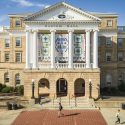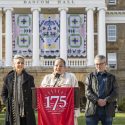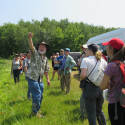Ojibwe birchbark canoe returns to Lake Mendota after 10 years, connecting to 1,000s of years of art and culture
Ten years ago, a birchbark canoe cut through the icy waters of Lake Mendota, paddled by its maker, Wayne Valliere (Mino-giizhig in Ojibwe) of the Lac du Flambeau Band of Lake Superior Chippewa. Once back on land, the canoe was installed in Dejope Residence Hall on the University of Wisconsin–Madison campus, where it has hung on display from the dining hall rafters ever since.
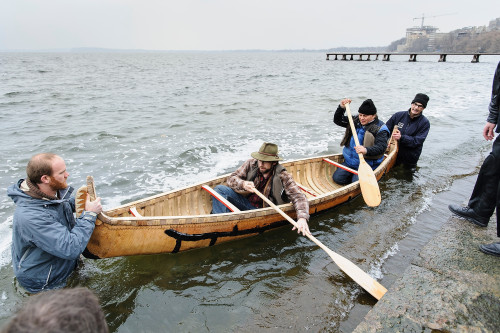
From left to right, Marcus Cederström (folklife curator and lecturer in the Department of German, Nordic, and Slavic+), Tim Frandy (then an outreach specialist at the UW Collaborative Center for Health Equity), Wayne Valliere (then artist-in-residence with the Department of Art and member of the Lac du Flambeau Band of Lake Superior Chippewa Indians) and Tom Loeser (professor of art) prepare to launch the canoe for the canoe’s inaugural paddle on Lake Mendota in 2013. Photo: Jeff Miller
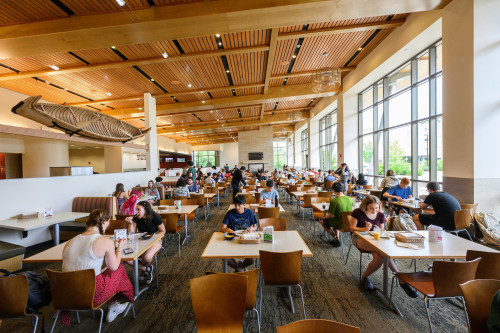
The canoe hangs overhead as students eat breakfast in Dejope Residence Hall’s Four Lakes Market in 2023. Photo: Althea Dotzour
Dejope (or Teejop) is the name that the Ho-Chunk and other Indigenous peoples have called Madison for time immemorial. Every day, the canoe gives students a visual connection to the rich and enduring heritage of this land that now makes up UW–Madison’s campus. But after a decade on land, the canoe needed to return to the water.
On Oct. 5, the birchbark canoe once again entered Lake Mendota, marking the 10-year anniversary of its making. Before the canoe launched, Valliere spoke to a gathering that included other members of the canoe building team, community members and students from the first-year interest group “Earth Partnership, Indigenous Arts and Sciences: Restoration Education and Stewardship.”
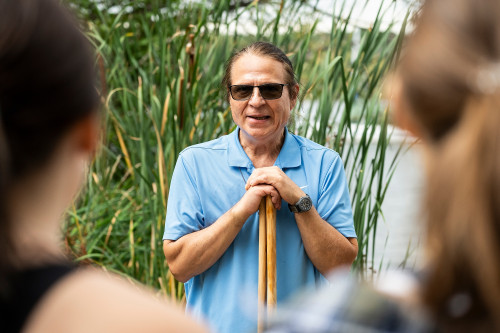
Before launching the canoe for its 10-year anniversary, Valliere, spoke with gathered community members and UW students about the canoe’s making and meaning. The traditional canoe, known in Ojibwe language as wiigwaasi-jiimaan, was handmade by Valliere when he was an artist-in-residence in 2013.
In his opening remarks, Valliere emphasized the canoe’s cultural significance and its connection to Ojibwe language, culture and education.
“The Ojibwe language is the most complex language in the world,” Valliere said, “So we teach our language as we’re doing our culture things, so there’s more immersion.”
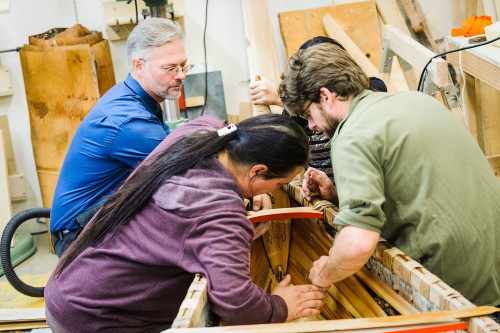
Pictured here in 2013, Thomas DuBois (left) and Tim Frandy (right) help Valliere (lower left) install steam-bent cedar wood ribs along the canoe’s hull. Photo: Jeff Miller
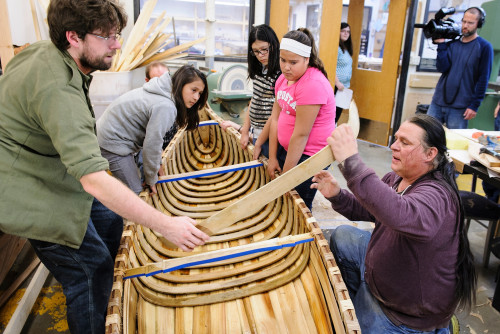
During the canoe’s construction, sixth-grade Lac du Flambeau students Lorrina BigJohn, Aiyana Beson and Mackenzee visit the workshop to learn about the process. Photo: Jeff Miller
The canoe’s 10-year anniversary, he said, stands as a testament to the preservation of Ojibwe culture.
“We build birchbark canoes in our school, we build dugouts in our school, but most of all, our children hear the sound of our language every day through this practice,” he said.
Wayne Valliere made the canoe during his 2013 tenure as artist-in-residence. He designed it to foster relationships, friendships and mutual reliance between the Lac du Flambeau public school and UW–Madison. Valliere collaborated with students from both UW–Madison and Lac du Flambeau, along with community members.
“We’re learning a lot about Indigenous cultures, mainly focusing on campus,” FIG student Thea Dean said, “This [canoe] hangs up in Dejope, so we’re learning what is actually on campus.”
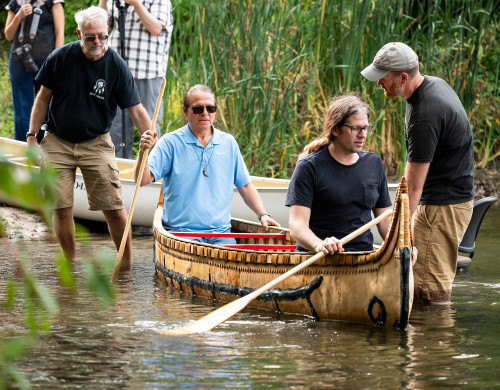
On Oct. 4, 2023, DuBois, Valliere, Frandy, now assistant professor of nordic studies at the University of British Columbia, and Marcus Cederström launch the canoe for a second time.
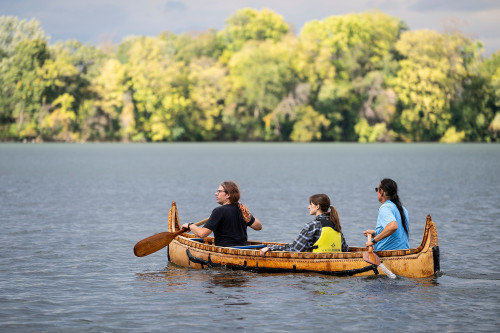
At center, first-year student Caitlyn Rose Kenney takes in the experience as Frandy (left) and Valliere (right) paddle across Lake Mendota.
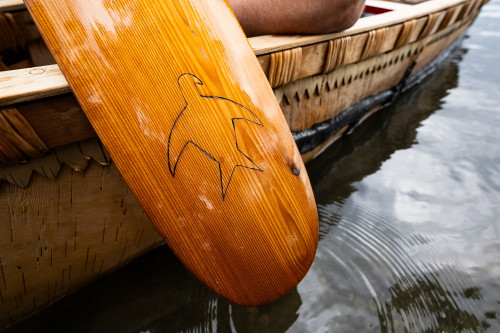
A thunderbird icon carved into the handmade white cedar paddle dips into the water.
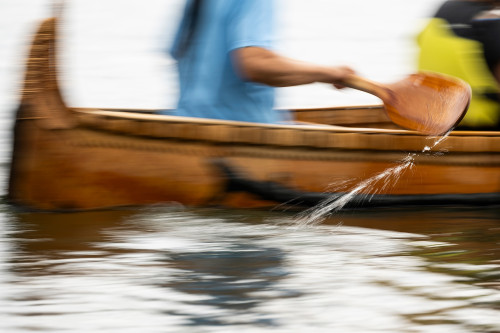
Reunited with the water, the canoe glides across Lake Mendota, paddled by Valliere.
Each member of the first-year experience group, or FIG, had the opportunity to take a ride in the canoe, accompanied by Wayne Valliere and a canoe team member.
At the commemoration, Valliere was joined by Tom DuBois, Chair and Professor in the Department of German, Nordic, and Slavic+.
“It was always the intention to use [the canoe] every year and to remind students of that relationship with Lac du Flambeau,” DuBois says. “It’s just really wonderful to see how well the canoe is doing and see people enjoy it and be connected with that tradition,” DuBois says.
Tags: arts, campus life, Native Nations, students

